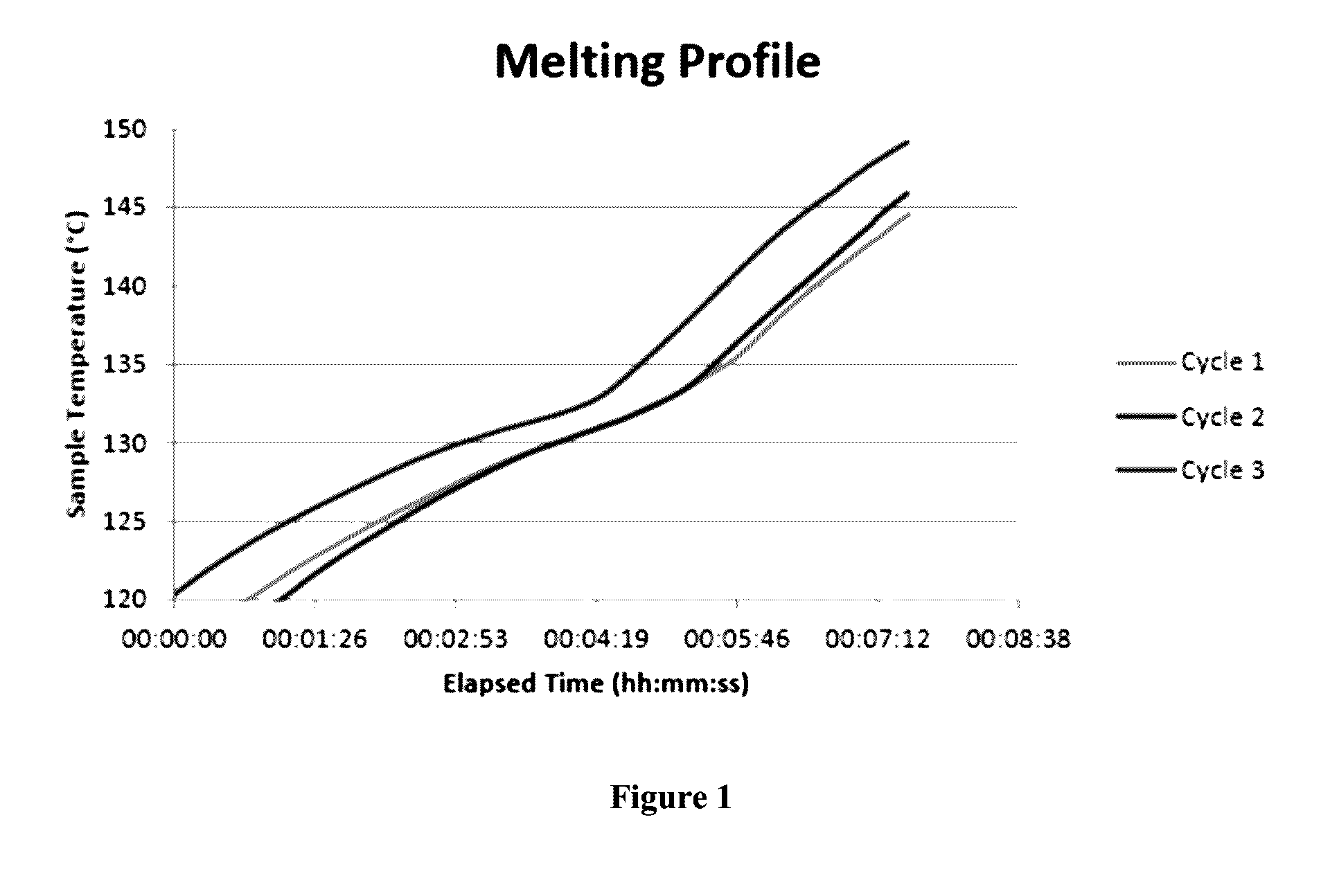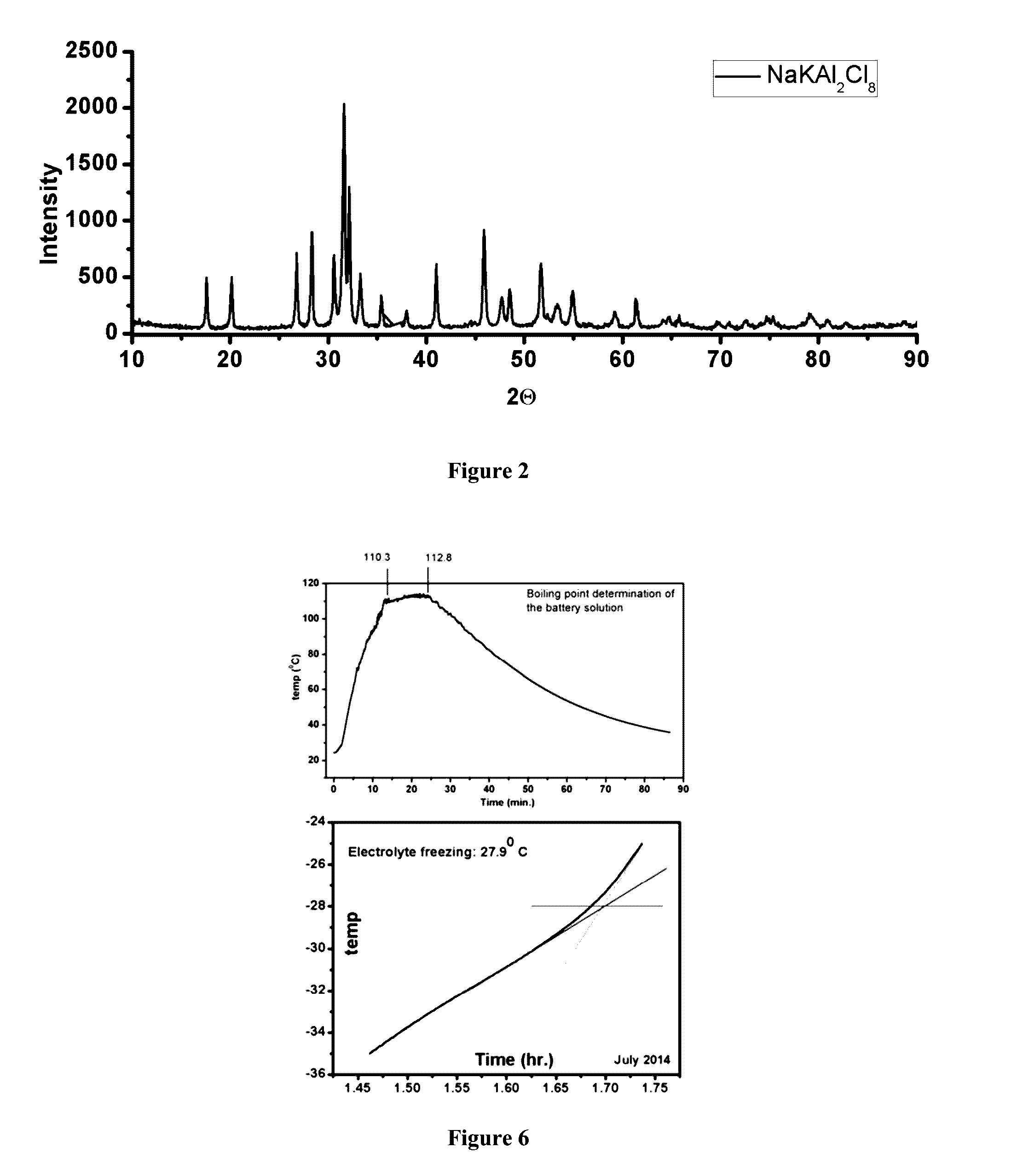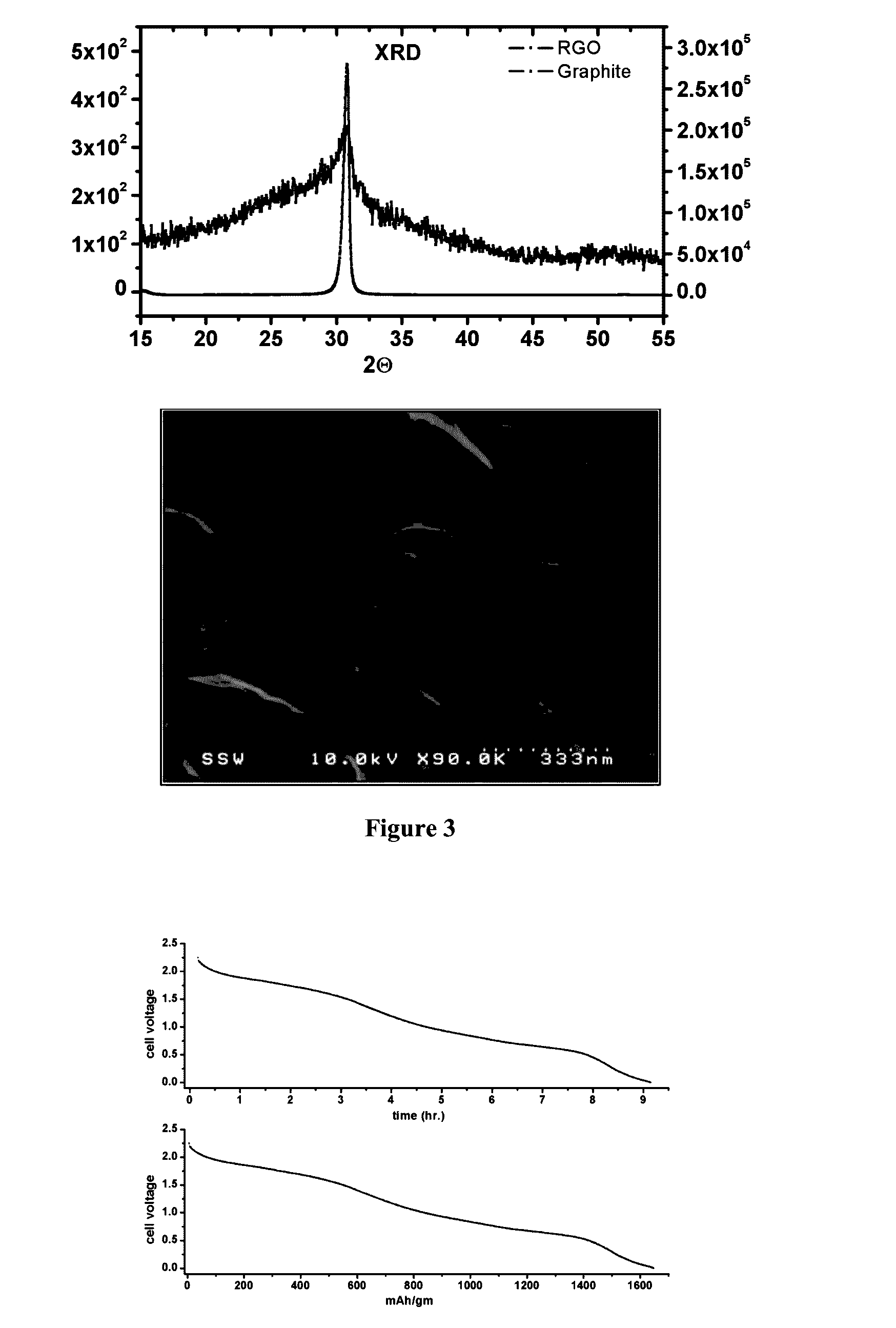Rechargeable chloride battery
a chloride battery and rechargeable technology, applied in the field of storage batteries, can solve the problems of high cost, large physical footprint, high cost of water storage, etc., and achieve the effect of improving the global lithium reserve, and reducing the cost of lithium storag
- Summary
- Abstract
- Description
- Claims
- Application Information
AI Technical Summary
Benefits of technology
Problems solved by technology
Method used
Image
Examples
example i
[0048]A sample of a ternary chloroaluminate was prepared by mixing commercially available high purity AlCl3, NaCl and KCl salts obtained from Sigma Aldrich, Canada, at a 2:1:1 molar ratio within an argon-filled glove box. The sample was treated under argon (5.0 Grade) flow at 150° C., at lsccm flow rate, for 4 hours to remove traces of water or any other volatile residues. The resultant sample was then heated adiabatically in the argon-sealed container having in-situ thermal probe. This ternary chloroaluminate has an unique eutectic melting point as low as 133° C., as shown in FIG. 1, which shows the temperature of the sample measured in-situ under adiabatic condition at a sampling rate of 100 millisecond. The deviation in sample temperature due to latent heat is recorded indicating a melting transition that was also noted on visual observation of the physical condition of the sample within the glass container.
[0049]Tests showed that a eutectic 1:1 mix of NaCl and KCl had a melting ...
example ii
[0053]Test measurements of the high-temperature cell have been done using electrolyte E-I held at 140° C. to ensure that it is at molten state. The cell was fabricated out of a 2-inch diameter seamless aluminum tube having ¼ inch wall-thickness; the aluminum tube is the cathode (negative electrode). Reduced graphite oxide (RGO) was used as the anode. The anode material was packed within very fine pore cellulose paper and inserted within a tubular perforated graphite construct. The anode block was attached to a 1 / 8 inch titanium rod that passes through a vacuum seal on the top cover of the cell for electrical connection; the top cover of the cell was sealed to the container using a PTFE gasket and means were provided to enable removal of air and refilling with inert gas (Ar). The cell was filled to ¾ of its volume with powdered E-I sample and kept sealed at 0.5 Torr Ar-atmosphere. A safety release valve was provided to maintain pressure at no more than 2 atmospheres. The construct of...
example iii
[0062]Solid E-I was treated with dilute NaOH solution and stirred to initially obtain a dense white mix, referred to as a slurry. The slurry was then diluted with deionized water and 30% H2O2 was added, to obtain a clear pale yellow solution that had the characteristic odour of oxychloride. This solution is referred as E-II and was used as the electrolyte of a battery cell functioning at room temperature. The density of the solution was 1.25 gm / cc and the pH was tuned to be approximately between 1.7-2.0 for the use as battery electrolyte. It was tested for its thermal robustness through a range of temperature that determined the freezing and boiling point as −27.9° C. and +110° C. respectively (FIG. 6). This electrolyte is referred to as E-II.
[0063]The measured potential (−1.3 to −1.4) and acidic pH of the solution indicates that at equilibrium the reduction of Cl− and Cl2 is as follows:
Cl−+3H2O6H++(ClO3)−+6e−; 1 / 2Cl2+3H2O6H++(ClO3)−+5e→(−1.47 V)
Cl−+4H2O8H++(ClO4)−+8e−; 1 / 2Cl2+3H2O6...
PUM
 Login to View More
Login to View More Abstract
Description
Claims
Application Information
 Login to View More
Login to View More - R&D
- Intellectual Property
- Life Sciences
- Materials
- Tech Scout
- Unparalleled Data Quality
- Higher Quality Content
- 60% Fewer Hallucinations
Browse by: Latest US Patents, China's latest patents, Technical Efficacy Thesaurus, Application Domain, Technology Topic, Popular Technical Reports.
© 2025 PatSnap. All rights reserved.Legal|Privacy policy|Modern Slavery Act Transparency Statement|Sitemap|About US| Contact US: help@patsnap.com



